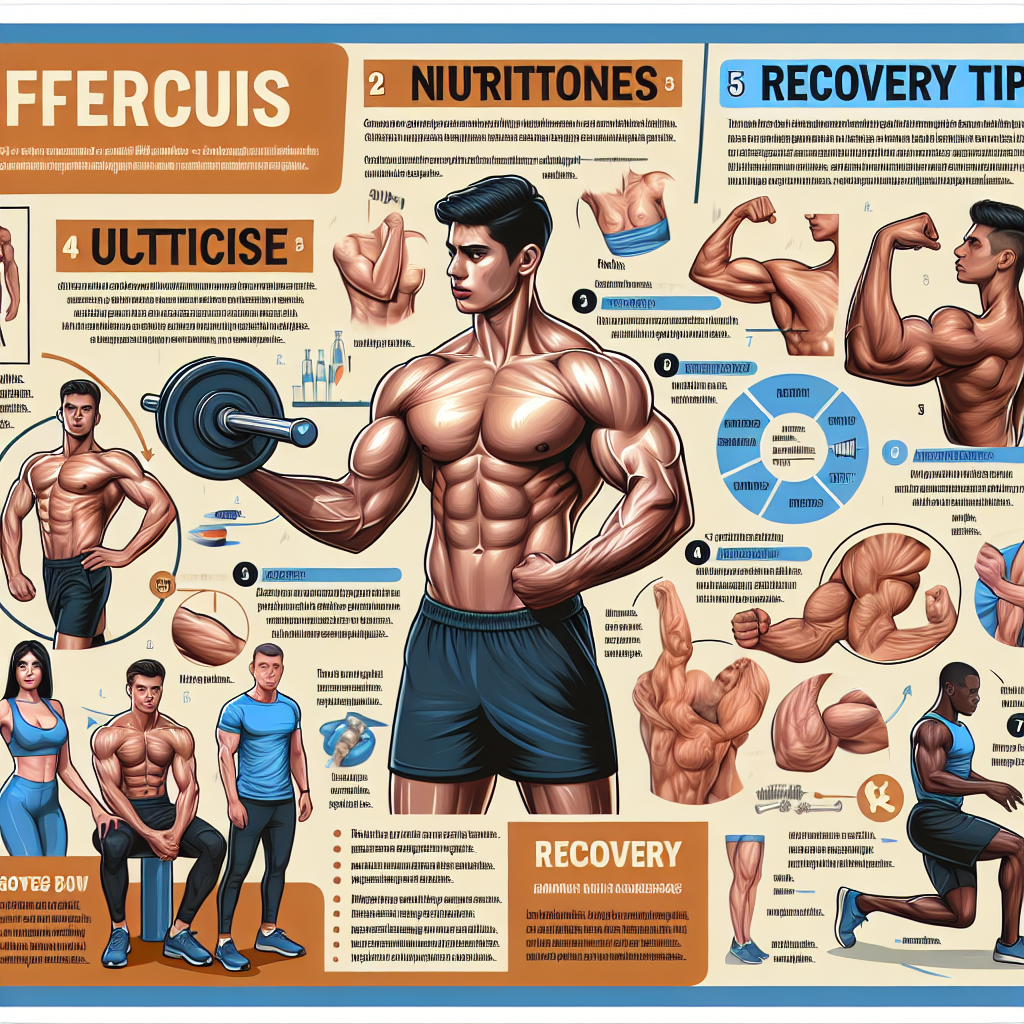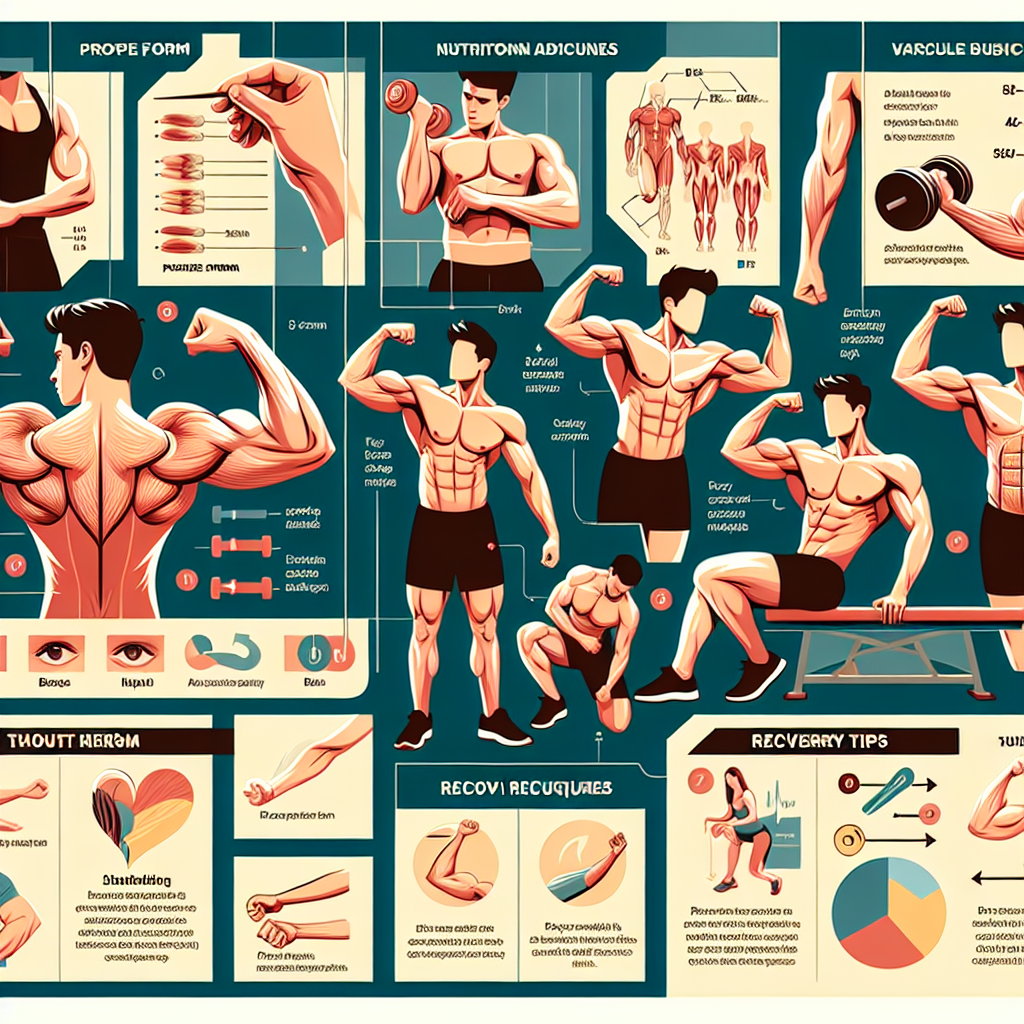The Comprehensive Guide: How to Build Bicep Muscle
Are you tired of seeing no progress despite countless hours at the gym? Get ready to change your approach with “The Comprehensive Guide: How to Build Bicep Muscle”. This Go-to guide will equip you with the tried and tested methods, revealing the science behind muscle growth, answering those burning questions, and tips on how to effectively target your biceps. So, brace yourself and get ready to experience some serious muscle gain.

Understanding Bicep Anatomy
Before we dive into the specifics of building up those biceps, let’s familiarize ourselves with the anatomy of this muscle.
Identifying bicep muscle groups
Your biceps, also known as the biceps brachii, are located in the upper arm, between the shoulder and the elbow. This muscle group consists of two heads: the long head and the short head. Both heads start at the scapula (shoulder blade) and join together to form a single muscle belly which is attached to the forearm bone.
Detailing the function of the bicep muscle
The main function of the biceps is to allow rotation of the forearm and to flex the elbow, meaning it pulls your forearm towards your shoulders. It also plays a crucial role in lifting and pulling movements and even provides stability to the shoulder joint. Understanding these functions will help you train your biceps more effectively and safely.
Optimal Nutrition for Muscle Growth
Building muscle isn’t only about workouts, it’s also about what you’re feeding your body.
Eating for mass
Eating for mass means consuming more calories than your body burns. This doesn’t mean indulging in junk food, instead focusing on nutrient-rich foods. Include plenty of lean proteins, whole grain carbs, and heart-healthy fats in your meals.
The role of protein
Protein should be your best buddy when you’re trying to build muscle. It’s the building block of muscle tissue and promotes muscle recovery after workouts. Aim to consume around 1.2 to 2.0 grams of protein per kilogram of your body weight daily.
Importance of hydration
Don’t underestimate the role of water in muscle development. Hydration aids in digestion, nutrient absorption, and even in maintaining muscle volume. Remember to drink plenty of fluids throughout the day and especially during your workouts.
Vitamins and supplements
While you should get most of your nutrients from food, sometimes you might need an extra boost. Vitamin D, omega-3, and branched-chain amino acids (BCAAs) are just some of the supplements that can support muscle growth.
Designing a Bicep Training Program
A well-structured training program is essential for effective muscle growth.
Choosing the right exercises
Choosing the right exercises is key to stimulate muscle growth. Opt for exercises that target both heads of your biceps, such as curls and pull-ups.
Figuring out the correct volume
Volume is essentially the total amount of work you’re doing, calculated as sets x reps x weight. For optimal muscle growth, aim for 6-12 reps for 3-6 sets of each exercise.
Resting period and frequency of workouts
How often and how much you rest is just as crucial. While it can vary between individuals, a rest period of 48 hours between intense bicep workouts is usually recommended to allow for recovery and growth.
Common Bicep Exercises
Here are some tried-and-true exercises to build your bicep muscles.
Bicep curls
A classic exercise that’s great for both the long and short head of the biceps. Use dumbbells or a barbell, and remember to keep your elbows close to your torso throughout the movement.
Hammer curls
Hammer curls target the brachialis, a muscle that lies underneath the biceps, giving your arms a fuller look. They also work on the long head of the biceps.
Preacher curls
Preacher curls place the biceps under tension for longer periods, which can spur growth. They’re performed using an angled bench known as a preacher bench.
Concentration curls
This exercise isolates the biceps by removing the potential of using other muscles during movement. They’re great for focusing on the muscle-mind connection.
Resistance band curls
These are perfect for those who prefer working out at home. Just like with weights, you can adjust the intensity by changing the bands’ thickness.

Advanced Bicep Training Techniques
Once you’ve mastered the basics, you may want to incorporate these advanced techniques into your routine.
Dropsets and supersets
Dropsets involve doing multiple sets of the same exercise without resting in between, but dropping the weight each time. Supersets, on the other hand, involve two different exercises with no rest in between. Both methods can enhance muscle growth.
Cheating and forced reps
Done carefully, “cheating” on some reps (using a bit of momentum to help lift the weight) can be beneficial as it allows you to push past the point of failure. Similarly, forced reps (assistance from a spotter or using your other hand on the final few reps) can help exhaustion, stimulating muscle growth.
Negatives
This involves focusing on the lowering phase of a lift, which causes muscle damage needed for growth. You may need a spotter to help you lift a heavier than usual weight.
Mind-Muscle Connection
Looking to level up your training? Don’t underestimate the power of the mind-muscle connection.
What is mind-muscle connection?
It’s a conscious, focused feeling of the muscle working during training. Research suggests that focusing on the muscle being worked can increase muscle activation, leading to better results.
Importance of focusing on the muscle during exercise
Focusing on the muscle being worked inhibits the recruitment of surrounding muscles, making your workouts more efficient.
How to improve mind-muscle connection
Improving this connection begins with lighter weights and deliberate, mindful movements. Warm-up sets or stretching can also help you to ‘find’ the muscle before you start your work sets.

Incorporating Cardio in your Training
Contrary to what you may hear, cardio can be beneficial for muscle growth.
Benefits of cardio for muscle growth
Cardio improves circulation and heart health, which can indirectly support muscle growth by improving the transportation of nutrients to the muscles.
Types of cardio suitable for bicep development
Aim for low-intensity steady-state (LISS) cardio that doesn’t cause too much muscle damage, such as walking or light cycling. High-intensity interval training (HIIT) can also be good, but you’d need to balance it with adequate rest and nutrition.
Overcoming Plateaus
You’ve been training hard but seeing no more progress? Don’t worry, it’s a common roadblock in the muscle-building journey.
Identifying a plateau
A plateau can be identified when there are no changes in strength or muscle size for an extended period, despite consistent training and proper nutrition.
Ways to overcome a plateau in muscle growth
Try changing up your exercises, sets, reps, or rest time. More advanced techniques like dropsets and supersets can also be effective.
When to change the training routine
As a general rule, you should reassess your routine every 4-6 weeks. If you’re not seeing any progress by then, it might be time for a change.

Rest and Recovery
Yes, your workouts are important – but so is your rest.
Understanding the role of rest
Rest is when the actual muscle growth happens. Your body repairs muscle fibers damaged during workouts, making them larger and stronger.
Importance of sleep in muscle recovery
During sleep, your body produces the bulk of its growth hormones that help repair and build muscles. Aim to get 7-9 hours of sleep per night.
Balancing exercise and rest days
Balance is key. Too much rest won’t bring progress, but neither will too much exercise. A common routine is the two-days-on, one-day-off scheme, but you should adjust it according to your own needs and response.
Addressing Common Questions and Myths
There are many misconceptions about muscle-building out there. Let’s address a few common ones.
Are free weights or machines better for bicep growth?
Both can be effective if used correctly. Free weights are usually recommended for beginners as they work stabilizer muscles, too. As you advance, machines can be useful to isolate and target biceps more intensely.
Does the ‘pump’ indicate an effective workout?
The ‘pump’ is just blood filling up the working muscle, which temporarily makes it look bigger. It can feel good and be an indicator that you’re doing an exercise correctly, but it’s not a reliable sign of a truly effective workout which should be measured by strength and muscle gains in the long run.
Can you train biceps every day?
Simply put, no. Training causes micro-tears in the muscles. It’s in the rest periods between workouts that the body repairs and strengthens the muscle. If you train constantly, you’re not giving your body time to repair itself, which is counterproductive.
Building strong biceps isn’t an overnight job, it takes time, dedication, and also a fair bit of knowledge. But with the understanding of the bicep muscle and how to train it effectively, combined with optimal nutrition, rest, and recovery, you’re set on a good path to those impressive gains. Good luck on your fitness journey!



Pingback: Understanding The Amount Of Protein Needed To Build Muscle: A Comprehensive Guide On Reddit